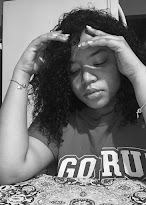“To collect photographs is to collect the world. Movies and television programs light up walls, flicker, and go out; but with still photographs the image is also an object, lightweight, cheap to produce, easy to carry about, accumulate, store’’
“Photographs furnish evidence. Something we hear about, but doubt, seems proven when we're shown a photograph of it. In one version of its utility, the camera record incriminates. Starting with their use by the Paris police in the murderous roundup of Communards in June 1871, photographs became a useful tool of modern states in the surveillance and control of their increasingly mobile populations”.
“Everyone can relate to this work,” Sann said. “It’s not just Black women; it’s white women, Asian women. Men can see the women in their lives—memories from their childhood or scenes from their marriage or their family life. It’s so universal and yet representation like this is so rare.”
“This woman can stand in for me and for you; she can stand in for the audience, she leads you into history. She’s a witness and a guide,”
Phoebe Hogan- The Cindy Sherman Effect:
“We live in the era of YouTube fame and reality-TV shows and makeovers, where you can be anything you want to be any minute of the day, and artists are responding to that. Cindy was one of the first to explore the idea of the malleability or fluidity of identity.”
“Sherman’s coup was to cast herself as subject matter, making each of her staged characters the star of an implicit narrative, from the lush color centerfolds that followed the “Film Stills,” in 1982, to the strangely sexualized “Broken Dolls” of the ’90s”.

No comments:
Post a Comment
Note: Only a member of this blog may post a comment.